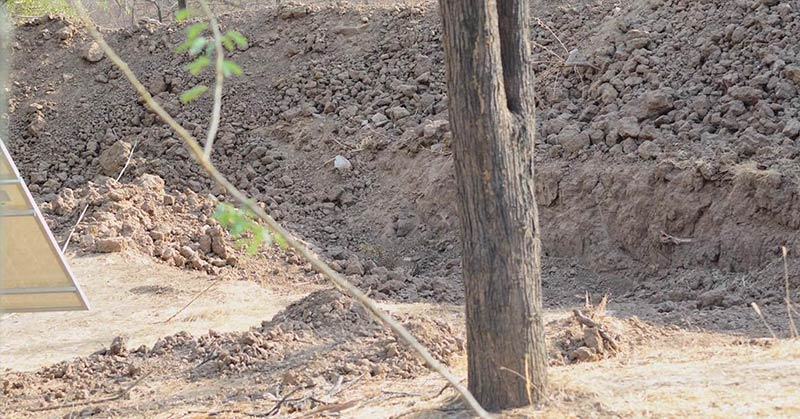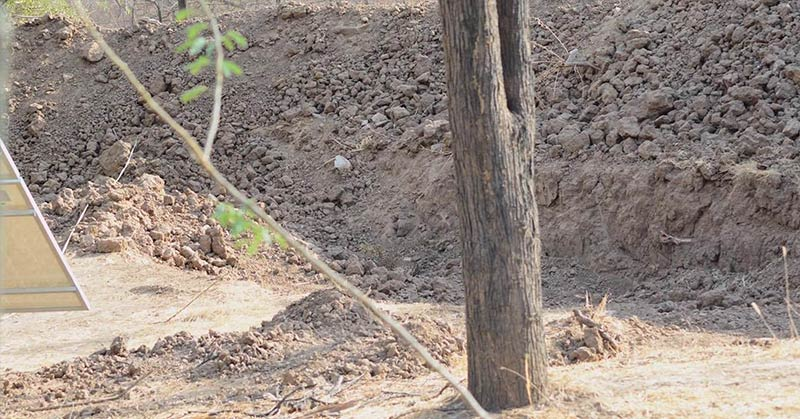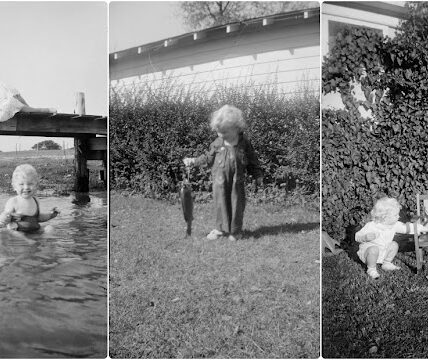When it comes to optical illusions, there are few as captivating as the viral “find the leopard” photo that recently took social media by storm. This image, posted on Twitter by wildlife advocate Bella Lack, challenged users to spot a well-camouflaged leopard resting on rocky terrain. At first glance, the photo appears to be nothing more than a patch of dry land. But as users discovered, there’s a lot more lurking in this picture than meets the eye. So, can you find the leopard?
The Backstory of Bella Lack’s Leopard Challenge

On September 27, 2019, Bella Lack, a 16-year-old wildlife activist, shared a baffling photo with her 150K Twitter followers. The photo showed a barren patch of dry land with the caption:
“Someone just sent this to me and asked me to find the leopard. I was convinced it was a joke… until I found the leopard. Can you spot it?”
The post quickly went viral, amassing 9.1K retweets, 22.4K likes, and over 5K comments. The image left countless people scratching their heads, their eyes glued to the screen as they tried to spot the elusive feline. Some users found it after zooming in, while others gave up, frustrated by the perfectly camouflaged creature.
Why Is This Leopard So Hard to Spot?
The photo itself seems unremarkable at first—just a dry landscape with scattered rocks and sand. But hidden among these earthy tones is a leopard, seamlessly blending into its surroundings. Leopards are masters of natural camouflage. Unlike chameleons, which change colors to match their environment, leopards use their unique spotted coats to blend into specific landscapes, making them nearly impossible to detect.
The camouflage works so well that even the most observant viewers often miss the predator hiding in plain sight. The leopard’s spotted fur mirrors the textures and colors of the rocky terrain, making it appear as part of the landscape rather than a living animal. It’s this genius of nature that makes leopards such effective hunters—and this photo such a successful optical illusion.
The Photographer Behind the Viral Illusion
This viral image was captured by Indian photographer Hemant Dabi, who has a reputation for showcasing the stealthy nature of big cats. Dabi’s photo not only sparked intrigue but also highlighted the extraordinary camouflage skills of leopards. These majestic cats, known for their stealth and adaptability, have an impressive ability to melt into their surroundings, whether in dense forests or arid landscapes.
Dabi’s image is not just a clever optical illusion but also a reminder of the incredible survival instincts that leopards possess. In the wild, this natural camouflage helps them stalk prey, evade predators, and remain undetected by humans—a critical skill, given their shrinking habitats and the threats they face.
Why We Love Optical Illusions: The Science of Visual Puzzles
Someone just sent this to me and asked me to find the leopard. I was convinced it was a joke… until I found the leopard. Can you spot it? pic.twitter.com/hm8ASroFAo
— Bella Lack (@BellaLack) September 27, 2019
Why are we so drawn to optical illusions like this one? Part of the appeal lies in the way they challenge our brains. When we look at an illusion, our brains attempt to interpret conflicting visual information. We engage problem-solving skills, focus intensely, and even question our perception—essentially giving our minds a workout.
This “find the leopard” challenge is especially satisfying because it involves a process of discovery. Viewers start off unsure of what they’re looking at, but as they keep searching, they begin to spot patterns and details that weren’t initially visible. The moment of finally spotting the leopard brings a sense of accomplishment and relief—almost like finding Waldo in a crowded scene.
The Realities of Leopard Conservation
Beyond the fun of finding the hidden leopard, this viral photo also sheds light on the serious conservation challenges facing these beautiful animals. Leopards (Panthera pardus) are found across Africa and parts of Asia, but their populations are under severe threat due to habitat loss, poaching, and human conflict. Many leopard subspecies are now critically endangered, with numbers dwindling due to illegal hunting for their prized pelts, which fetch high prices on black markets worldwide.
In sharing the photo, Bella Lack encouraged her followers to support leopard conservation efforts through the Born Free Foundation, a UK-based nonprofit organization dedicated to protecting leopards and other endangered species. The foundation works to rescue leopards from captivity, combat poaching, and raise awareness about the urgent need to protect their habitats.
Tips for Spotting the Leopard in the Photo
pic.twitter.com/DRpRNcd89D
— Momo. 🌼 (@AngelusofDeath) September 28, 2019
Still struggling to find the hidden leopard? You’re not alone. Even the most determined viewers have admitted to spending ages staring at the photo before finally spotting the well-camouflaged cat. Here are some tips to help you:
- Start from the center: Many users who successfully found the leopard recommended starting from the center of the image and working outward.
- Look for a horizontal stick: There’s a small, horizontal stick near the middle of the frame. The leopard is said to be just left and slightly down from this point.
- Zoom in: If you’re still having trouble, try zooming in on the photo. This often helps to bring out subtle details that are hard to see at a regular viewing distance.
- Outline the shape: Some Twitter users have shared zoomed-in images that outline the leopard’s shape, making it easier to spot. Once you see it, you’ll realize how perfectly it blends in with its surroundings.
The Thrill of Solving the Puzzle
Did you manage to find the leopard on your own, or did you need a hint? Either way, this viral optical illusion demonstrates the incredible power of natural camouflage and the joy of solving a visual puzzle. It’s a simple yet profound reminder of nature’s brilliance and how it can sometimes hide right before our eyes.
Conclusion: More Than Just a Game
The “find the leopard” photo may have started as a fun optical illusion, but it has since evolved into something more meaningful. It’s a testament to the awe-inspiring abilities of nature’s creatures and a reminder of the urgent need to protect them. As we marvel at the leopard’s clever disguise, we should also consider the conservation efforts needed to ensure that these majestic cats don’t disappear from the wild. So, next time you come across an optical illusion like this, remember—it’s not just a test of vision; it’s a glimpse into the wonders of nature.




